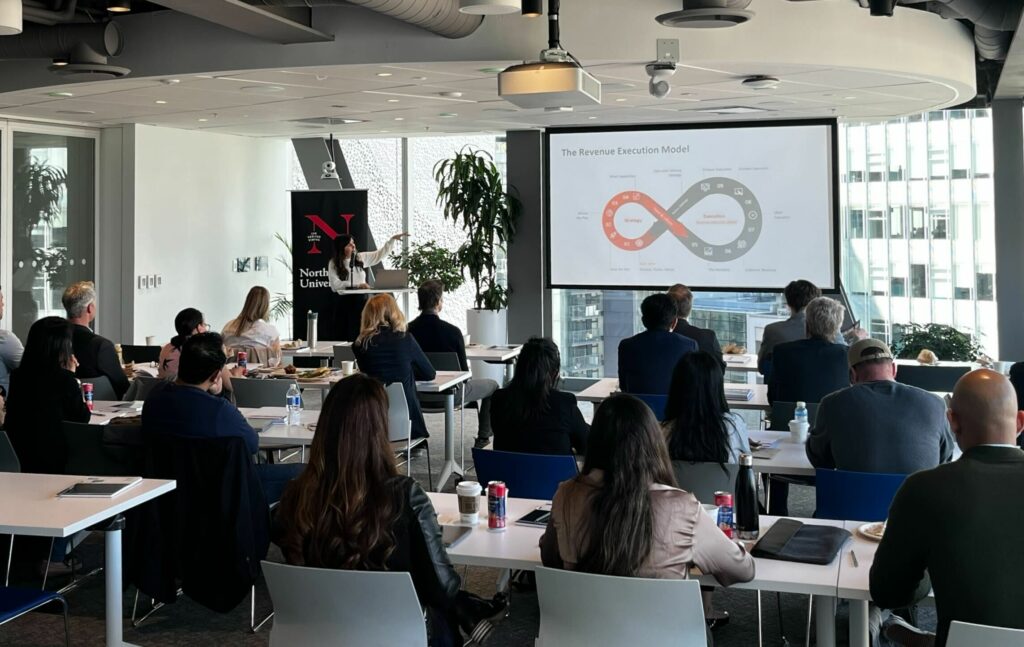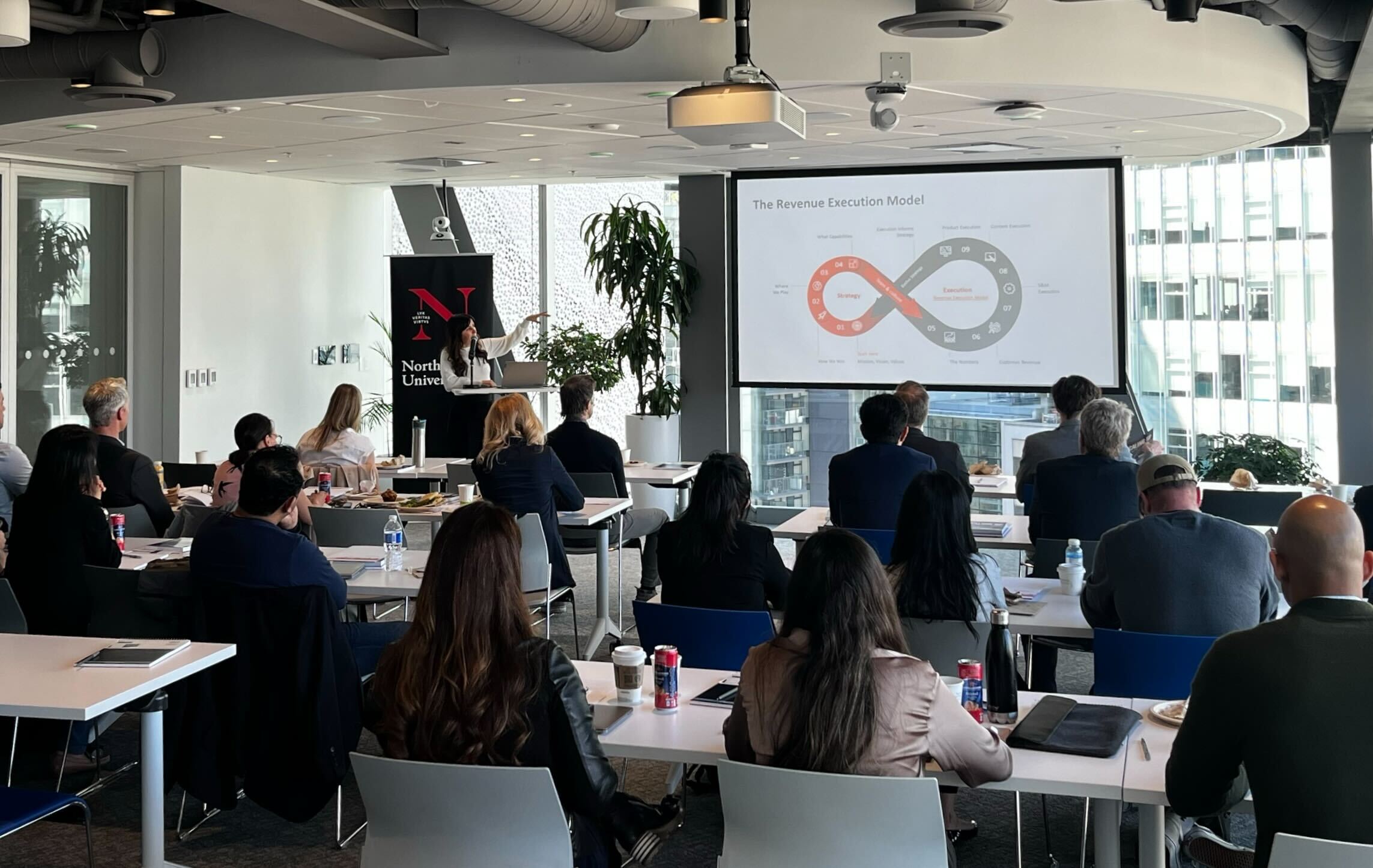Our Second Annual Tech CEO Event

At Pender we are passionate about supporting entrepreneurs to drive innovation and create impact. As hands on investors we provide broad support for company building, which includes creating opportunities for learning and knowledge sharing. Last week we hosted public and private technology CEO’s and key leaders from across a number of our funds to explore key challenges in scaling a business.
Our speakers, Kristine Steuart (former CEO, Allocadia), Steve Munford (CEO, Trulioo), Judi Hess (former CEO, Copperleaf) and Paul Gibbons (McDermott Bull) shared their experience and learnings across the key areas of scaling go-to-market and scaling teams.
Scaling GTM – There are a variety of models for setting strategy, but what does good execution look like? Here are some key takeaways:
- Revenue Execution Model: Strategy drives Execution; Execution should inform Strategy – a virtuous cycle that fuels growth. Having an in-depth understanding of your customers, sales and marketing processes, and product positioning is paramount for scaling. The Revenue Execution Model developed by Kristine Steuart and her colleagues can guide a systematic review and prioritization of areas for improvement.
- Customer Retention Strategy: Often overlooked, a customer retention strategy can significantly benefit revenue growth without requiring substantial investment in new sales and marketing initiatives.
- Product-Market Fit: Recognizing when your product is ready to scale is crucial. Relying soley on revenue to validate product-market fit can be risky. Understanding customer engagement and product usage enables you to gauge readiness for the next phase of sales and marketing investment.
- Market Expansion: When thinking about how to enter a new market, new vertical or geography, a low-cost approach is to set up a tiger team. A tiger team is a small, focused group of individuals dedicated to launching and iterating your go-to-market strategy. Ensure clear metrics and milestones are defined to demonstrate success before making additional investments.
Scaling Teams – The importance of building the right team to grow your business cannot be overstated. Here’s what we learned:
- Strategic capabilities: Understanding the capabilities required for your strategy requires developing a clear view on where you want the business to go. Identifying and prioritizing talent needs enables the organization to proactively build these capabilities internally or source a bench of potential talent early.
- Role Definition: Organizations often rush through defining the role, which hampers their ability to identify the right talent. Utilizing a scorecard and taking time to define the core objectives, functional accountabilities and required competencies for a role increases probability of bringing on the right talent.
- Build or Buy?: CEO’s must manage a healthy tension between developing individuals that have helped grow the business and recognizing when it’s necessary to bring in new or different skills and experiences. Incorporating strategies to manage this balance ensures sustained growth and innovation.
- Never Sacrifice Quality: Leaders often feel pressure to bring on talent quickly to support growth. A mediocre hire can hamper your organization’s growth more than a bad hire as it will take longer to recognize and address. Investing extra time to find the right hire (a cultural fit with the best skills to deliver on your strategy) will ultimately save time in the future.
This event also provided a platform for leaders of our portfolio companies to connect and collaborate with fellow leaders. We extend our gratitude to Robert Erario, Business Consultant and Scaling Up facilitator, for skillfully moderating our CEO only roundtable.
Finally we would like to acknowledge Dominik Beckers and the team at Northeastern University for providing space for our group to come together and their commitment to supporting the tech ecosystem in Vancouver.
Back to top ↖



